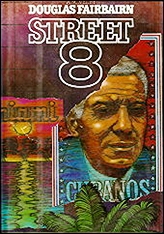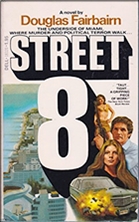Sat 16 Jan 2010
Movie Review: THE COMPANY SHE KEEPS (1951).
Posted by Steve under Films: Drama/Romance , ReviewsNo Comments

THE COMPANY SHE KEEPS. RKO Radio Pictures, 1951. Lizabeth Scott, Jane Greer, Dennis O’Keefe, Fay Baker, John Hoyt. Director: John Cromwell.
I picked this one to watch for two reasons. First, Lizabeth Scott was in it. Secondly, because Jane Greer was in it. And if you’d like me to keep going into thirdsies, with both of the aforementioned two ladies in it, the movie had to be a noir film, not so?
Not so, or if it is, it’s the most borderline of touchy-feely noir films I’ve ever seen. Not that that’s so bad, I hasten to add, but in no way nor at no time did this movie go in a way I thought it was going to go, and I enjoyed (almost) every minute of it.
The movie opens with Jane Greer’s character (Mildred Lynch, later to be known as Diane Stuart) up for parole at the women’s detention center where she’s serving an indeterminate sentence. She’s polite, she’s mild, she’s humble, and she convinces the three or four old biddies on the board. The one male member is not so sure.

And sure enough, once she’s out, her real personality comes to the fore, and taking the brunt of her built-up frustration and anger at society is one of the kindest, most understanding parole officers the world has ever seen, Joan Wilburn (Lizabeth Scott).
How understanding is that, Steve? Try this. When Diane steals Joan’s fiancé right out from under her, does she (Diane) get mad? Does she get even? I won’t tell you, but maybe if I hint loudly enough, you will get the idea.

Nor does the world treat Diane all that well, either, which is maybe where the noir aspect might come in, but no, I’ve been thinking about this overnight, and it’s not really enough. Jane Greer might overplay her role just a little, but if one can act with only facial expressions to indicate his or her thoughts, she does it in this movie, and extremely well.
As for Lizabeth Scott, she may underplay her role, that of an Ice Princess who sees and knows what her duty is, and goes ahead and — well, I won’t say, but I’m sure that if you read any other review of this movie, you can find out easily enough anyway, without having to watch this movie, which you should.
Part of Joan Wilburn’s problem may indeed be the Ice Princess part of her make-up. If she weren’t so cool and collected even with her fiancé (Dennis O’Keefe, by the way), their relationship may have meant more to him than it appears it does. I don’t think he even ever got to First Base with her, if they had Bases back in 1951.















